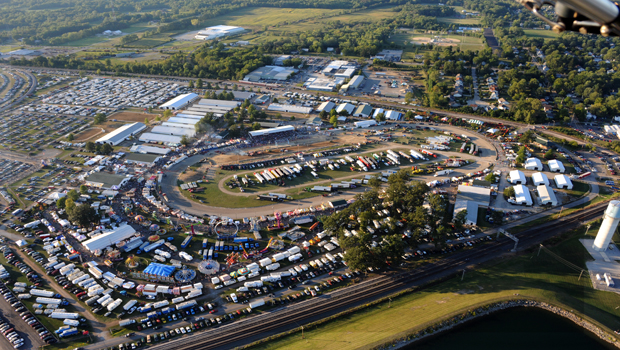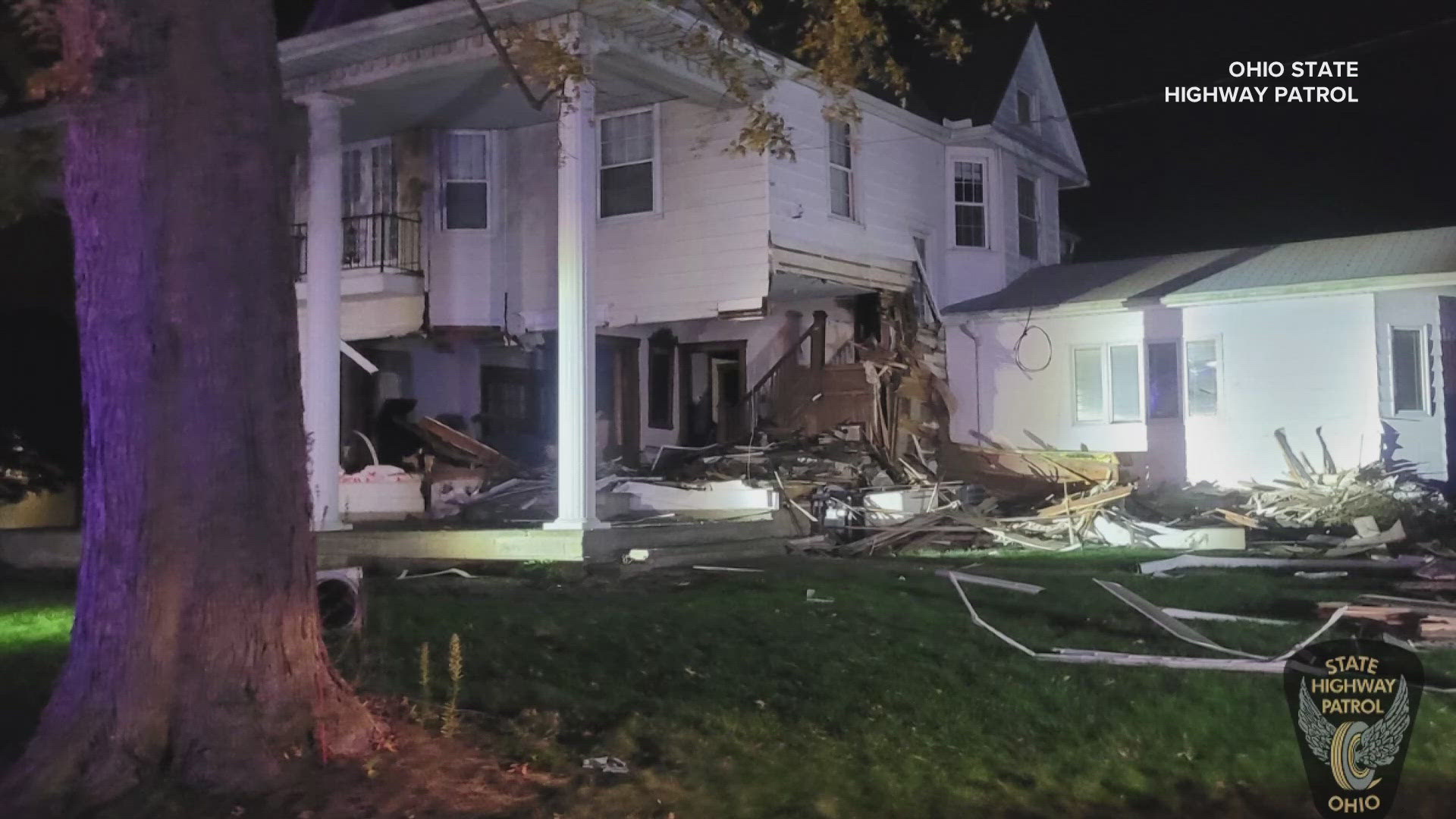Have you ever had that sinking feeling when something important just gives out? It’s a familiar scenario, isn't it? Whether it’s a critical piece of equipment, a part of your home, or even a minor injury from an unexpected slip, dealing with things that get "busted" is just a part of life. We often find ourselves facing these moments of damage and disrepair, wondering what went wrong and what comes next. This discussion, you know, explores some real-world examples of things getting broken or damaged, drawing insights from experiences that could happen anywhere, even in a community like Lorain County. It’s all about understanding what happens when things fail and, perhaps, how we can approach fixing them or preventing issues in the first place.
It’s really about recognizing those moments when something is no longer working as it should. From a piece of gear that’s seen better days to a structure showing signs of wear, these "busted" situations call for attention. We often learn the most valuable lessons when things don’t go according to plan, and seeing how others handle such challenges can be quite helpful, actually.
This piece aims to shed some light on the common threads in these experiences of damage and repair. We’ll look at various scenarios where things got "busted" and consider the practical steps taken, or perhaps, the lessons learned from them. It’s a bit of a look at durability, the need for quick fixes, and the bigger picture of keeping things in good shape, no matter where you are, maybe even in Lorain County.
Table of Contents
- Understanding What Gets Busted
- Safety First: When Things Get Busted Up
- The Wear and Tear of Everyday Items
- Building and Maintaining Quality: Lessons from Boats
- Why Addressing Busted Items Matters
- FAQ About Busted Situations
- Looking Ahead: Readiness and Resilience
Understanding What Gets Busted
The term "busted" can mean a lot of things, really. It might mean something is physically broken, like a tool or a part of a machine. It could also refer to a person getting injured or something failing unexpectedly. In a community, it could even refer to something like a public utility needing repair. This piece will lean into the physical damage aspect, which, you know, is quite common in many areas, including places like Lorain County.
We often see things that are just worn out, or perhaps, they weren't quite made to last under certain conditions. It's a bit like a constant battle against entropy, where things just tend to break down over time. Understanding the different ways things get "busted" helps us to prepare, and in some respects, deal with these situations better.
This isn't just about big, dramatic failures; sometimes, it's the little things that get "busted" that cause the most headaches. A small crack, a loose connection, or a hinge that isn't quite right can lead to bigger problems down the road. It’s almost a reminder that paying attention to the small details can save a lot of trouble later on, so.
Safety First: When Things Get Busted Up
One of the most important aspects of things getting "busted" is the potential for injury. When something breaks unexpectedly, especially if it’s something you rely on for balance or support, the results can be pretty serious. You know, it’s not just about the item itself, but about the impact it has on people.
Navigating Jetties and Unexpected Slips
I’ve actually seen more than a few people who got pretty busted up climbing around jetties. It’s a very risky activity, you see. When you’re out there, you don't really have a decent chance of keeping your body square and balanced. You’re often reaching, extending, sort of climbing or descending, and all that movement on uneven surfaces can be quite precarious.
It’s just a matter of time, it seems, before you slip. And when that happens, you’re tearing and breaking stuff, like your ligaments or even bones. It's a stark reminder that even seemingly simple activities can have serious consequences if you're not careful. The environment itself can be, you know, quite unforgiving, so being aware of your footing and surroundings is absolutely critical.
This kind of situation highlights the need for personal awareness and, you know, maybe even better signage or warnings in such areas. It's not always about equipment failing, but about the human element interacting with a challenging environment. Being prepared for the unexpected, and frankly, avoiding overly risky moves, is a very good idea, as a matter of fact.
The Wear and Tear of Everyday Items
Beyond personal safety, many things in our daily lives simply wear out or break down. This is a common occurrence, and it’s something we just have to deal with. From household items to parts of our vehicles, something getting "busted" is, you know, a pretty regular event. It’s a bit like a constant cycle of use, damage, and repair.
When Hinges Give Out: A Common Frustration
Think about something as simple as hinges. I remember there was a thread on this a while back, actually. The Gemlux fellow, he explained why adjusting them is bad. I can't recall the exact details, but he did say that Gemlux would replace weakening hinges. It’s a pretty good policy, honestly.
I was thinking of calling them in the morning about some hinges. The only thing is, my boat is only nine months old. You know, you really don't want to keep doing this every nine months. It's frustrating when something designed to last starts failing so quickly. It speaks to the importance of quality components and, arguably, understanding the lifespan of parts, too.
This situation with the hinges is a perfect example of how even small, seemingly insignificant parts can cause a lot of annoyance and inconvenience when they get "busted." It also highlights the value of good customer service and warranties, which, you know, can really make a difference when you’re dealing with repeated issues.
Building and Maintaining Quality: Lessons from Boats
Speaking of boats, I just had the pleasure of spending the last month or so helping out a friend. He owns and builds Front Runner boats here in Jacksonville, Florida. If you’re in the market for an amazing 36, 39, or 47 CC with incredible attention to detail and decades of fishing the East Coast behind the design, you should really check these guys out. I am in no way affiliated with Front Runner, nor do I have any technical info to share, but it was quite an experience seeing the build process, you know.
Working on these boats, you see firsthand how things can get "busted" during manufacturing or through use. It really emphasizes the need for careful craftsmanship and thorough inspections. It’s not just about putting things together; it’s about making sure they hold up, which, you know, is a big deal when you’re out on the water.
The Importance of Initial Inspections
When you go to take delivery of something new, especially something as big as a boat, you might find blemishes or busted-through voids. If you do, just insist that they fix them then, and not at the 20-hour service. Voids are actually common on fiberglass boats. They’re no big deal and a piece of cake to fix, just as long as there are not many, and the few that there are, are small.
This really underscores the idea of catching issues early. A small "busted" void that's easy to fix at the outset can become a much bigger problem if left unaddressed. It’s a bit like finding a tiny crack in a foundation; you want to deal with it before it expands, you know. This kind of proactive approach saves a lot of trouble and expense down the line, pretty much.
It also speaks to the responsibility of both the builder and the buyer. The builder should deliver a quality product, and the buyer should inspect it thoroughly. It’s a partnership in maintaining quality, and that’s a lesson that applies to almost anything we acquire, whether it’s a boat or something else that might eventually get "busted."
Tackling Common Boat Damage
Things get damaged on boats, it’s just a fact of life for anyone who spends time on the water. For example, Rod has a busted lower unit for sale. We can all run aground, and that’s just one way things can go wrong. I can stand up in my console and have rod storage, which is a nice feature, but it doesn't protect against every kind of impact, obviously.
I’ve even got a PDF from Cape Horn on the fuel tank replacement for a 19-footer, not sure of the year. I am to chop the floor on my 27-footer and replace both tanks myself. I’m just trying to get some other stuff fixed first, like a busted keel in the front. It’s a lot of work, and it shows that even with careful use, parts can and do get "busted."
I’m going to replace that keel before I start fishing this year. The center console and seat boxes are only attached with lags, and they are actually ripping out of the box the captain's seat sits in. This kind of damage is, you know, a pretty clear sign of stress and wear. It’s a good reminder that even robust components can fail under certain conditions, and you have to be ready to address them.
The Impact of Structural Damage
When you have something like a busted keel or a ripping seat box, it’s not just a cosmetic issue. These are structural problems that affect the integrity and safety of the vessel. A busted keel, for instance, can compromise the boat's handling and strength. It’s a big deal, and it needs immediate attention, obviously.
The fact that the center console and seat boxes are tearing out also suggests that the original attachment method might not have been sufficient for the forces involved. It's a lesson in engineering and material stress. When something is "busted" in this way, it tells you a story about how it was used or how it was put together, so.
Dealing with these kinds of structural "busted" issues takes time, effort, and often, a good bit of skill. It’s a pretty common experience for boat owners, but the principles of identifying and repairing structural damage apply to many other areas too. It's about restoring functionality and safety, which, you know, is paramount.
Why Addressing Busted Items Matters
It's clear that things getting "busted" is a universal experience. Whether it’s a personal injury from a slip on a jetty, a hinge that fails too soon, or a major structural problem on a boat, these situations demand our attention. Ignoring them can lead to bigger problems, more expense, and even danger, you know.
Taking care of things when they’re just starting to show signs of being "busted" is a much better approach than waiting until they completely fall apart. This proactive mindset applies to almost everything we own or interact with. It's about maintenance, awareness, and a willingness to put in the effort to keep things in good working order, pretty much.
This is relevant to any community, including Lorain County. The principles of safety, quality control, and timely repairs are universal. When something is "busted," it's an opportunity to learn, to improve, and to ensure that future experiences are safer and more reliable. It’s a continuous process of observation and action, actually.
Learn more about preventative maintenance on our site, and link to this page for more safety tips.
FAQ About Busted Situations
What does 'busted' typically mean in a community context?
In a general community context, "busted" can refer to a wide range of things that are broken, damaged, or no longer functioning as they should. This might include infrastructure like roads or pipes, equipment in public spaces, or even personal items that have worn out. It simply means something has failed or is in disrepair, you know.
How can common issues like 'busted' equipment be addressed?
Addressing "busted" equipment usually involves a few steps. First, you need to identify the problem accurately. Then, you might try to repair it yourself if it’s a minor fix, or you might need to call in a professional. Sometimes, if the item is too old or too damaged, replacement is the only option. It’s about assessing the situation and deciding on the best course of action, really.
Are there safety tips for avoiding 'busted' situations?
Absolutely, there are several safety tips to help avoid "busted" situations, especially those involving personal injury. Always be aware of your surroundings, especially on uneven or slippery surfaces. Use proper equipment for tasks, and make sure it’s in good working order. Regular maintenance of items can prevent unexpected failures. And, you know, don't take unnecessary risks; sometimes, avoiding a situation altogether is the safest bet, so.
Looking Ahead: Readiness and Resilience
The experiences shared here, you know, about busted hinges, damaged boat parts, and risky jetty climbs, all point to a larger truth. Things break. People get hurt. It's a part of living and using things. The real lesson isn't just about the damage itself, but about how we respond to it, and how we can, perhaps, try to prevent it.
Being prepared for things to get "busted" means having a mindset of readiness and resilience. It means understanding that wear and tear are natural, and that sometimes, unexpected events just happen. It's about being willing to inspect, to maintain, and to fix things when they go wrong, you know. This kind of approach builds a stronger sense of capability, whether you're dealing with a personal item or a community issue.
For more insights on keeping things in top shape, consider checking out resources on boat maintenance checklists. It's a good example of how systematic care can extend the life of equipment and prevent things from getting "busted" prematurely. It’s a pretty good way to stay ahead of potential problems, actually.



Detail Author:
- Name : Jadyn Hettinger PhD
- Username : lane.steuber
- Email : qkunze@robel.com
- Birthdate : 2001-11-07
- Address : 8586 Altenwerth Oval Hayesmouth, VT 32866
- Phone : +1-404-867-1502
- Company : Jakubowski LLC
- Job : Typesetter
- Bio : Aut cum iusto nemo ex unde. Et blanditiis est saepe mollitia. Maxime debitis quam dolores.
Socials
facebook:
- url : https://facebook.com/stanheller
- username : stanheller
- bio : Vel quasi itaque id deserunt et voluptatem in.
- followers : 475
- following : 603
linkedin:
- url : https://linkedin.com/in/heller1987
- username : heller1987
- bio : Unde velit rerum in voluptas omnis sunt.
- followers : 2806
- following : 2041
instagram:
- url : https://instagram.com/heller1986
- username : heller1986
- bio : Aperiam nam laborum aperiam voluptas in et. Voluptatum pariatur veniam numquam aut.
- followers : 251
- following : 1433